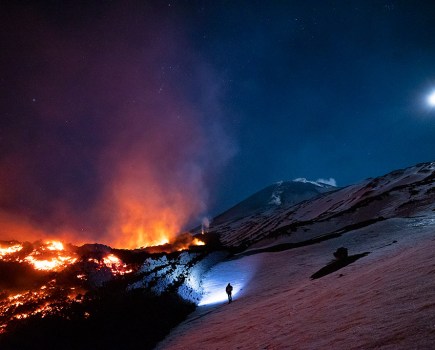Most of us associate light trails with shooting long exposures of traffic and fairground rides outdoors after dark; however, you can achieve creative results indoors as well. With a torch and a piece of string you can capture a variety of geometric light trails known as physiograms. These are created by a single, long exposure of a light source simply spun from a piece of string attached to the ceiling.
To make your own, all you need to do is set a long exposure on your camera and then let gravity work its magic. This is a fantastic technique to try when you don’t feel inclined to venture outside into the cold. You will need a room that is dark – some heavy-duty curtains will block out any ambient light – or simply wait until the evening.
- Hang a light source, such as a torch, from the ceiling using a piece of string (approximately a metre long) and a drawing pin or some strong adhesive tape. Ensure the light source is pointing towards the floor and that it can swing freely.
- Put your camera on a tripod, set it in a low position and place beneath the torch with the lens pointing towards the ceiling. Make sure you can access the viewfinder to compose and focus on the stationary torch.
- Set your lens to a wide focal length and switch to Bulb mode. Select a narrow aperture, of, say, f/18. Not only will this reduce any ambient light, it will also ensure the light trail stays in focus for the duration of the spin.
- Spin the torch and take a test shot. The shutter speed will depend on the ambient light, try a 30-40sec exposure to start. Keep the ISO low. If it’s too dark, increase ISO or aperture value and vice versa if it’s too light.








